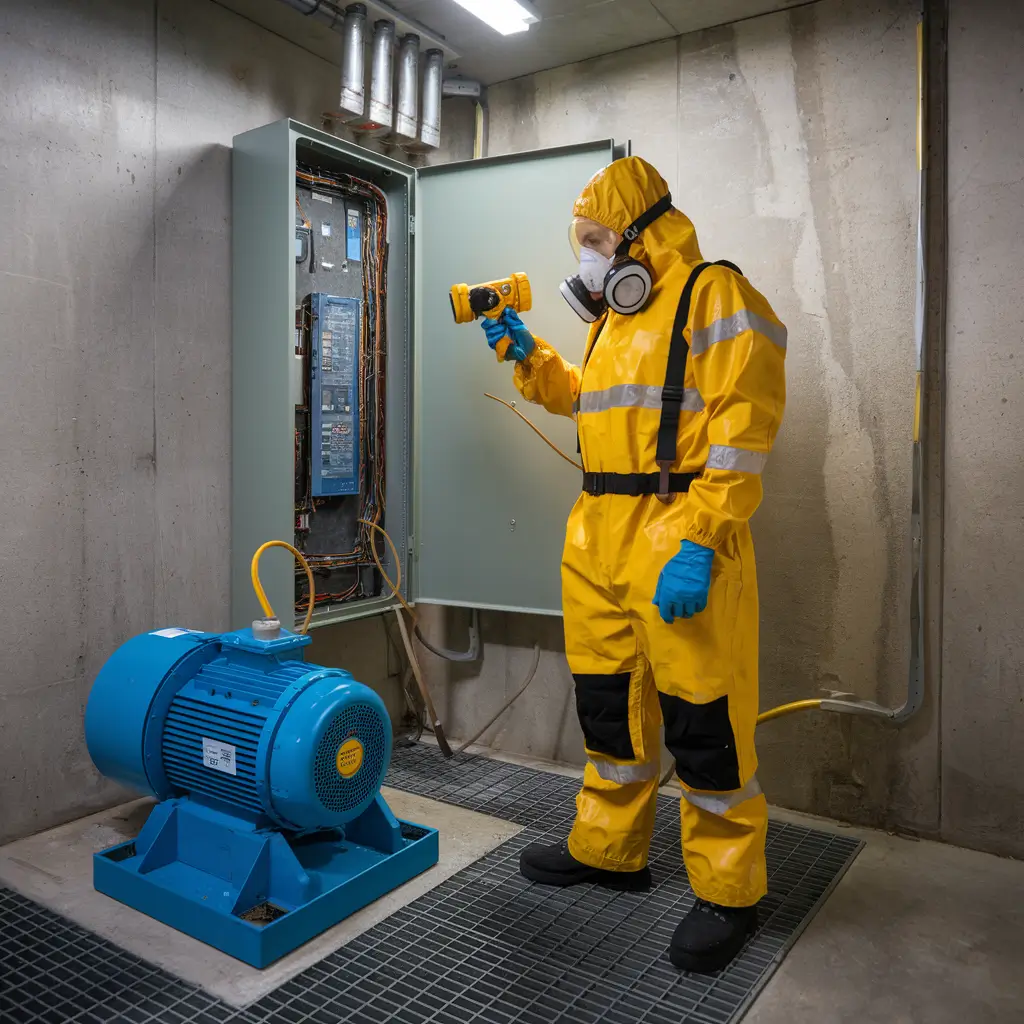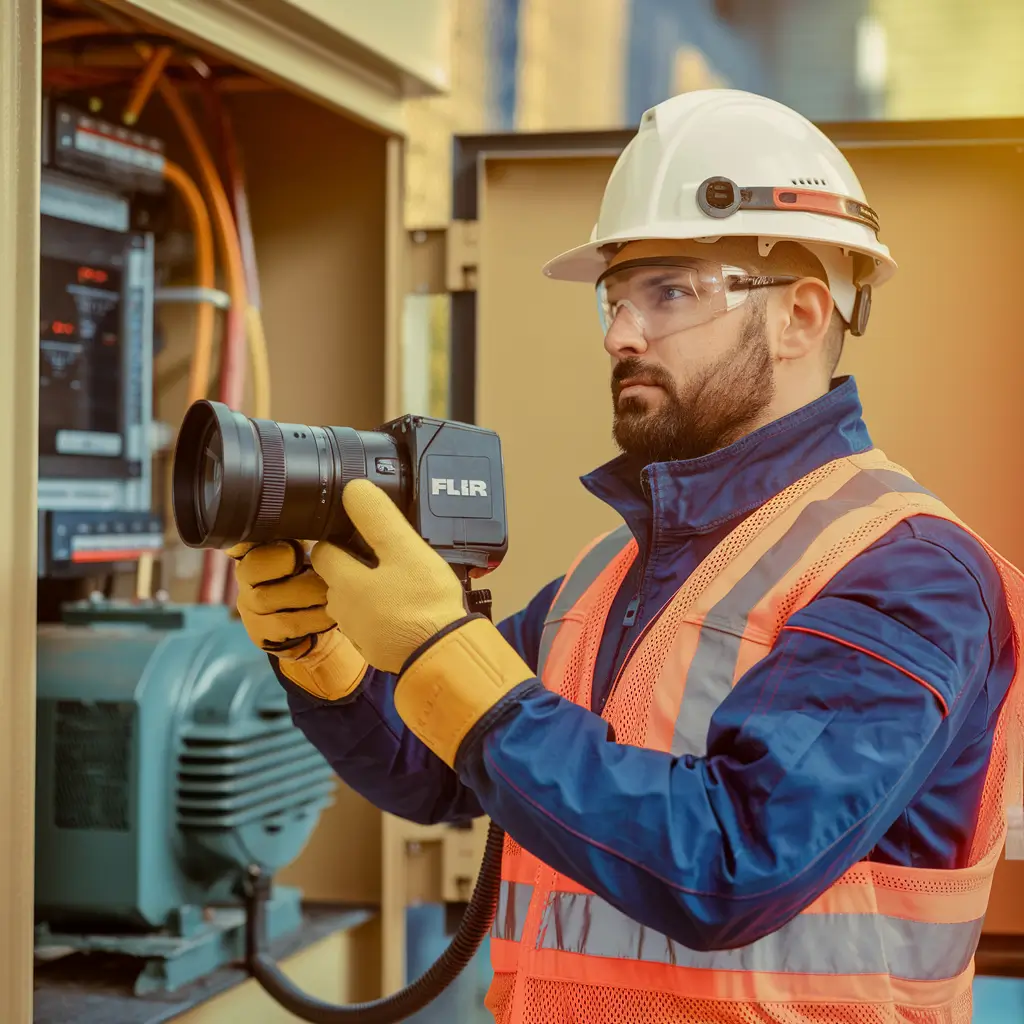Thermographic testing, also known as infrared thermography, is a non-destructive testing (NDT) method that detects and analyzes heat patterns and abnormalities in various systems and structures, including electrical, mechanical, and civil. Using infrared cameras, this technique identifies potential issues before they develop into serious problems. The following sections explain what thermographic testing is, why it matters, how often to perform it, who can conduct it, the benefits of regular testing, and how Velosy Safety Consultancy offers expert services in this field.

Thermographic testing involves capturing infrared thermal images to evaluate temperature variations across a surface. By analyzing these variations, professionals can identify hidden issues such as loose connections, electrical hotspots, or mechanical abnormalities.
The technology relies on the principles of thermal radiation. All objects emit infrared energy, and thermal cameras visualize and measure this energy. These results help professionals determine whether systems are operating safely or require maintenance or repair.
Professionals conduct thermographic tests across various sectors, including electrical systems, mechanical systems, building diagnostics, and industrial machinery.
Why Is Thermographic Testing Important?
- Prevents Failures: Early detection of problems like overheating , worn-out bearings can help prevent costly system failures.
- Ensures Safety: Overheating components can lead to fire or explosions. Thermographic testing ensures that such risks are identified and adressed.
- Reduces Costs: Identifying issues and preventive maintenance can minimize the need for expensive repairs or replacements.
- Compliance: Thermographic testing helps businesses to follow safety regulations, which is crucial for legality and business reputation.
At Velosy Safety Consultancy, we understand the importance of thermographic testing and we provide thermographic testing services at competitive price.
Who Should Handle Thermographic Testing?
Thermographic testing should only be handled by trained and certified professionals who have expertise in thermal images and understanding the systems they are inspecting. These professionals should have:
- Certification: Specialized training in infrared thermography, typically at NDT Level II, or NDT III certifications.
- Experience: Familiarity with the specific applications of thermography in industrial, electrical systems / mechanical systems.
- Knowledge of Safety Standards: Professionals should be familiar in applicable safety standards.
Velosy Safety Consultancy’s certified thermography experts hold the necessary skills and training to perform reliable inspections, and providing certifications.
How Often Should Thermographic Testing Be Done?
The frequency of thermographic testing depen on the nature of the equipment, the operating conditions, and regulatory requirements. Below are general recommendations:
- Annually for preventive maintenance, more frequent testing in high-risk environments.

Who Can Perform Thermographic Testing?
Thermographic test should be performed by certified thermographers and thermographic test certificate / report should be issued by legality accredited third party Inspection Company.
- Third Party Inspection Company: Third party Inspection Company like from Velosy Safety Consultancy, bring expertise and unbiased assessments.
As a leading safety consultancy, Velosy specializes in delivering high-quality thermographic testing services. For more details about our testing services, visit our website or contact us today!
What are the Benefits of Thermographic Testing?
Regular Infrared Thermography offers several benefits:
- Safer Workplaces and Rentals: By routinely testing , you’re ensuring a safer environment, whether for workers, tenants, or customers.
- Compliance with Legal and Insurance Requirements: Following a Thermographic testing schedule helps satisfy health and safety laws and maintain insurance coverage.
- Improved Equipment Lifespan: By identifying faults early, you’re often able to repair or replace items before they fail completely, which can extend their life and reduce replacement costs.

Conclusion
Thermographic testing is a vital part of maintaining safe environments in workplaces, rental properties, and public spaces. By regularly testing Electrical Panels, employers, landlords, and facility managers can prevent accidents, protect people, and meet safety standards. While it’s not legally mandated in every situation, it’s highly recommended, especially in higher-risk settings.
With a clear understanding of what Thermographic testing is and why it’s important, businesses and property managers can help create safer spaces for everyone.







